New school meal menu
Our new Spring/Summer school meal menu, starting from after February half term, is now available on our Meals page.
The menu has been created in liaison with Catering Leeds to ensure it meets the School Food Standards. We have also incorporated feedback from our school cook, pupils and parents/carers.
Pupils will continue to make their daily food choices at the start of the day to ensure they receive their first choice of main meal.
Online Safety
When using technology in class, Year 4 are always given a reminder of how to use the equipment safely and appropriately. Alongside these prompts, within other lessons, we also have some dedicated e-safety lessons.
On Wednesday, the children spent some time learning more about how to protect themselves whilst being online. We started by looking at some familiar images. The children were quick to identify these and speak, in detail, about what they were and the purpose they served.
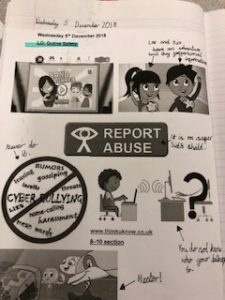
Following this, the class watched an age appropriate, online film provided by the educational site, Thinkuknow.
Thinkuknow is an education programme from CEOP, a UK organisation which protects children both online and offline. The film, aimed at 8-10 year-olds, explores the risks associated with making friends online and sharing too much personal information. Safety messages include highlighting privacy settings, being careful about sharing personal information, and ensuring that young people know who can help them if they’re worried about somebody they meet online.
The children answered questions from each other with maturity. It was very noticeable to see an improving awareness of the need to keep safe in the online world, just as much as you do in the offline world.
Question your child about this image.
Year 4 created their own acrostic poems linked to e-safety. 

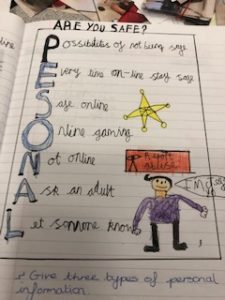
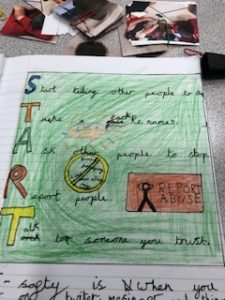
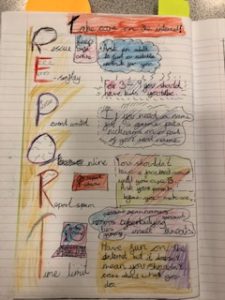
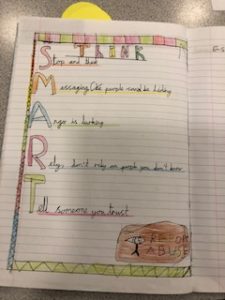
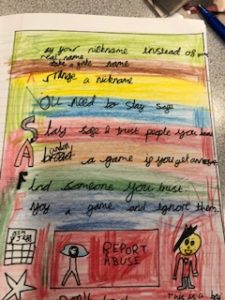
Please refer to our own school website for further information on how to help your child stay safe in a world full of technology:
As teachers and parents, we’re aware of the ways in which the use of social media, online gaming and the internet have become part of young people’s lives. We embrace the educational and social benefits of these new technologies and encourage responsible internet use. We’re also increasingly aware of the potential dangers and opportunities for misuse these technologies offer. Key to promoting online safety is open and honest discussions about the sites we’re using and the ways we’re using them – keep the dialogue open with your children about their internet use.
Water resistance is wonderful!
In Science, this week, Year 5 have been learning about water resistance. We set up an experiment that would test which plasticine shapes were the most and least water resistant using large cylindrical flasks of water.
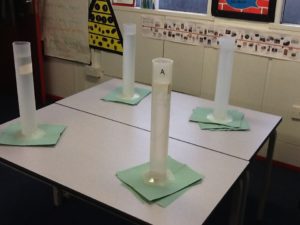 #
#
Next, we planned our different shapes within our groups.
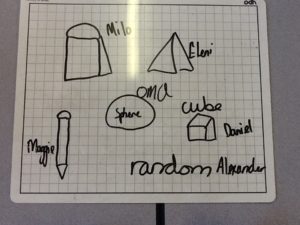
Using the same sized lump of plasticine, we then made each of our shapes. Challenge your child: Why was it important to use the same size blob of plasticine?
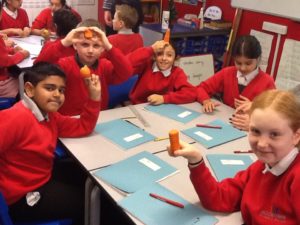
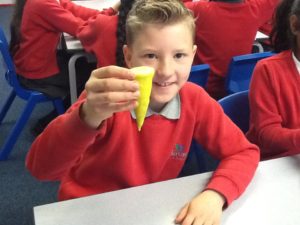
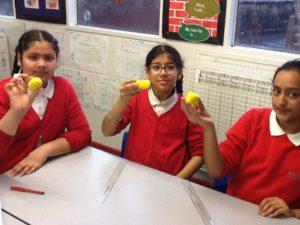

In order to test the water resistance, we dropped shape 1 and 2 into the tubes. Every round, the fastest shape would advance. At the end, we were left with the fastest shape and therefore the shape with the least water resistance.
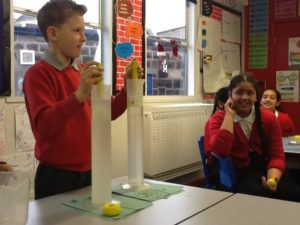
Action replay 1 – Notice how the garlic bulb shape on the right fell a lot slower. This is because it had a very flat surface on the bottom which increased the water resistance.
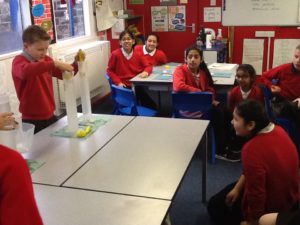
Some races were so close that we needed a slow-mo replay from our chief photographer, Mr Wicks, who was able to get a screen shot of an action replay to determine which touched the bottom first!
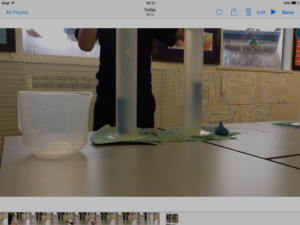
Shapes that were more streamlined and thinner (e.g. cones) had less water resistance and fell quicker. Shapes that had flat faces or were bulky (e.g. cubes) had more water resistance and they fell really slowly. It was great to see it happening before our very eyes!
(Sometimes, it didn’t always go to plan: blooper 1 and blooper 2.)
Marvellous Magnetic Homework
Getting create with magnetism was the focus of last week’s homework. During our weekly review, the children shared their work with each other. Around the room, we were amazed by the creativity on show.
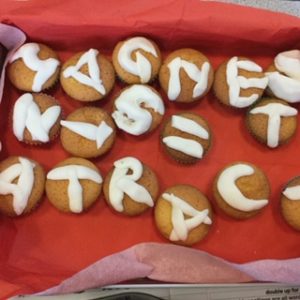
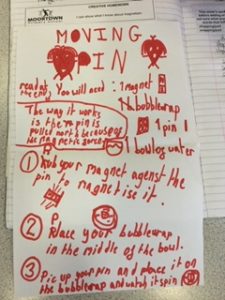
Phoebe began by making a pin magnetic. Then, she placed it on some bubble wrap and floated it on water. The magnetic pin span around as it connected with the Earth’s magnetic field and settled when it was facing North.
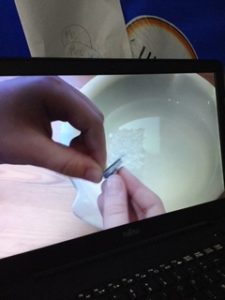
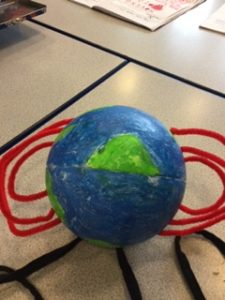
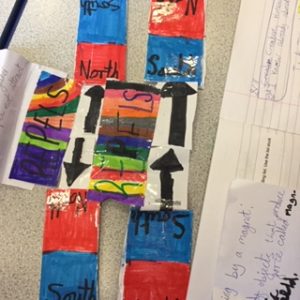
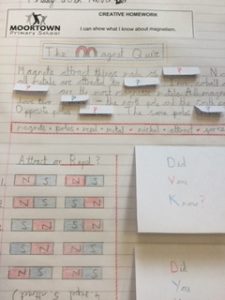
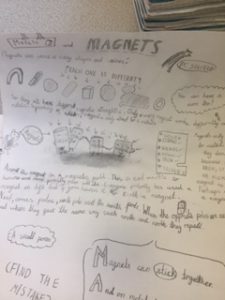
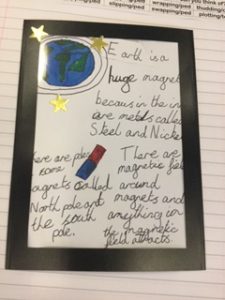
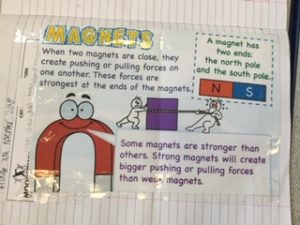

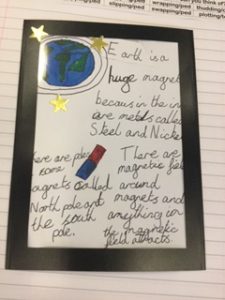
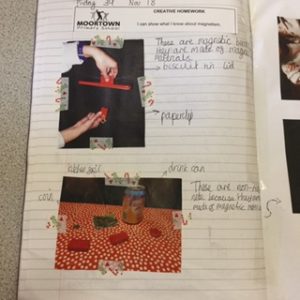
Year 2 book club
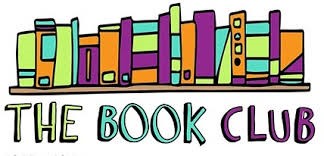
Next Tuesday, 11 December, it’s book club time in Year 2. This is an opportunity for the children to bring a favourite book to share with their classmates. It could be a story or an information book, a comic or a poem. It could be an old favourite or a book they’ve recently read.
Mrs Taylor and Mr Wilks will also share their favourite book!
We look forward to seeing and hearing about your choices!
When will be your next Park Run?
Thank you to Richard Spencer (parent, chair of the PTA and Park Run race director at Roundhay Park) who came to speak to the whole school this afternoon about the great, free, weekly Park Run events held locally.
We were impressed by the number of children who have already completed a Park Run event with one pupil achieving over 100 runs!
All you need to take part is to register for your personal bar code that is used at the event to record your position and time for the run. ThePark Run event is not a race. You are only trying to beat yourself by achieving a faster time each time you do it.
There is no commitment to attend every weekend: just turn up with your bar code when you can.
The course is fully marshalled and so children are able to run round with others as long as an adult accompanies them to the event.
- Junior Park Run (age 4-14 years – 2km course) 9am every Sunday
- Park Run (5km course) 9am every Saturday
- Local courses include Roundhay Park, Temple Newsam and Bodington (Brownlee Centre)
We’d love to hear your Park Run achievements – let your teacher know!
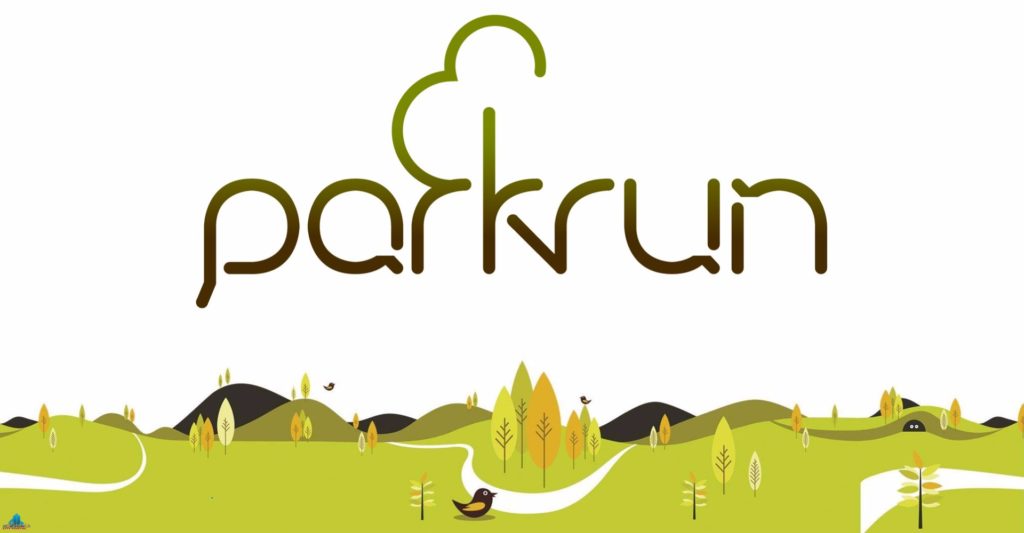
What is water resistance?
Our Science learning continues with water resistance this week. We’ve applied our previous learning about air resistance to investigate how the shape of an object affects the amount of water resistance acting upon it.
First, we planned the sort of shapes we thought would sink fastest and slowest through water.

Then, we worked together to create these shapes out plasticine in order to test them.

Finally, we tested the shapes against each other to see which would sink faster and discuss what forces were working on them to give the outcomes we saw.



Why not try the same at home? Albert wondered whether the size of the container we were testing them in would affect the results greatly. Could you investigate this at home?
What charity should our school support?
And the winner is…

Year 5’s chosen charity (the World Wildlife Fund) eventually went on to be chosen by our school council as Moortown’s new charity.
Here’s an extract from their website:
The world’s leading conservation organization, WWF works in 100 countries and is supported by more than one million members in the United States and close to five million globally. WWF’s unique way of working combines global reach with a foundation in science, involves action at every level from local to global, and ensures the delivery of innovative solutions that meet the needs of both people and nature.
Air resistance is amazing! Part 2
To test the science behind the parachute slowing us down when running, we set up an experiment involving parachutes, eggs and a window.
Year 5 worked in groups to make three different parachute sizes. We wanted to investigate which parachute had the most air resistance and therefore slow the egg’s fall the most to prevent it from breaking. It was important to keep everything else the same so that we could tell that it was definitely the parachute size affecting the results.
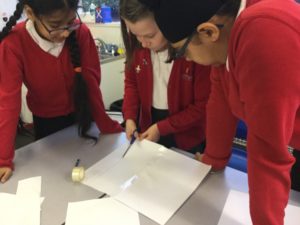
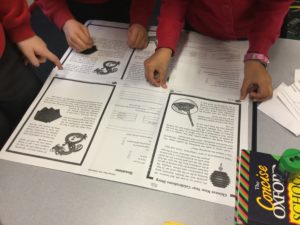

Next, it was the moment of truth. We waited patiently below to observe the speed of the parachute’s fall and whether or not our eggs cracked. A slower fall would mean more air resistance and, ultimately, an egg in less danger!
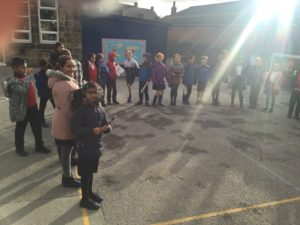
We found that the larger parachutes fell slower and had more success protecting their eggs. Smaller parachutes fell very quickly to the ground. This means larger parachutes have a greater air resistance and smaller parachutes have less air resistance.
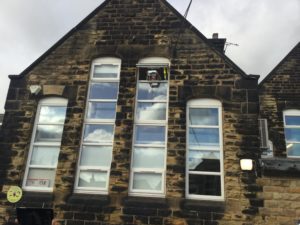
Science mini topic
We’ve now started a science mini topic based on forces. To begin this topic, the children were shown a series of forces-related photos and asked to come up with questions based on what they would want to know.
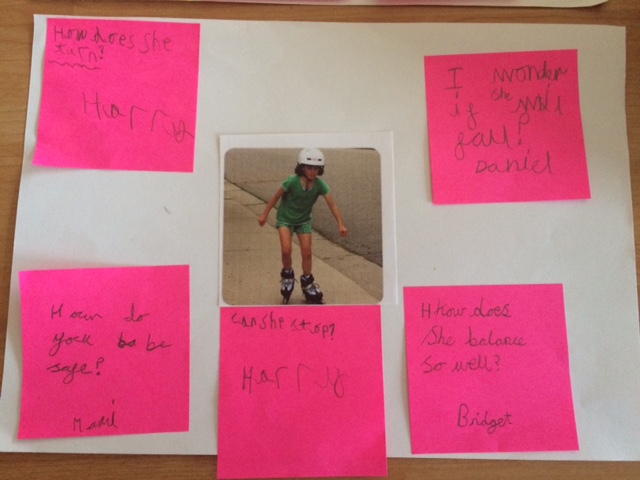
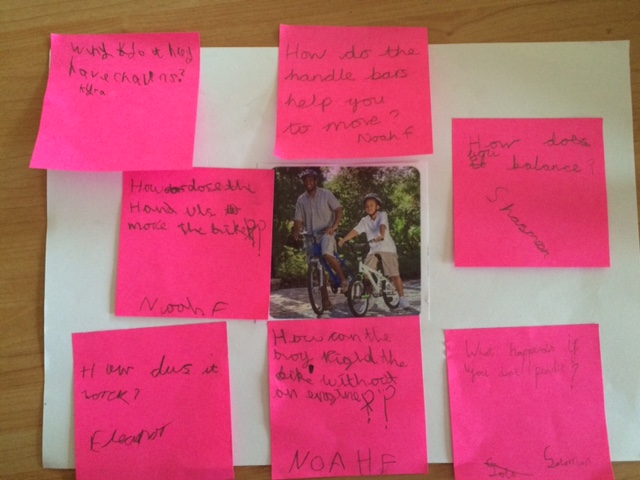
There were some great scientific questions and these will lead into some investigations we will be doing based on forces.
BBC website has a number of videos on forces if you want to find out more.